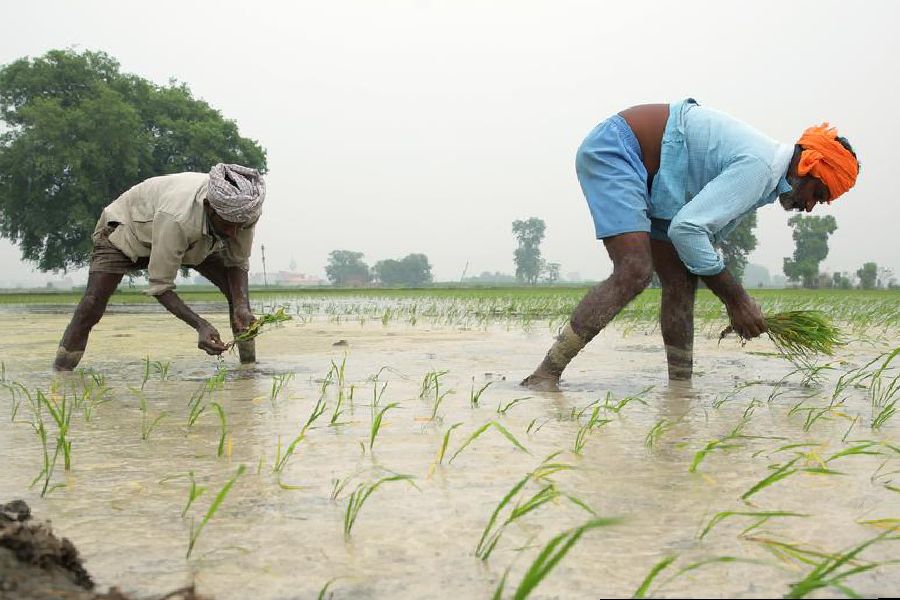El Nino, a natural climate phenomenon that alters global weather patterns, has officially returned after four years, threatening to exacerbate already elevated food inflation.
Last week, the US National Oceanic and Atmospheric Administration's (NOAA's) Climate Prediction Center said that El Nino conditions are already present and are expected to "gradually strengthen" over the next six to nine months, bringing a new period of extreme weather to much of the planet.
"There is a rather high probability [of another strong El Nino period]," professor Harald Kunstmann, from Germany's Institute of Meteorology and Climate Research (IMK-IFU) at Karlsruhe Institute of Technology, told DW. "If it happens, we can expect the same climate extremes and anomalies that are usually associated with this phenomenon."
El Nino, which is Spanish for Little Boy, is marked by warmer-than-average sea surface temperatures in the central and eastern Pacific Ocean near the equator.
It fuels flooding to the Americas, tropical storms to the Pacific and brings droughts to many other parts of the world, including southern Africa.
These effects cause severe disruption to fishing, agriculture and other sectors of the economy and are also known to be exacerbating the effects of climate change.
In 2016, El Nino contributed to the hottest year ever recorded and scientists are concerned it could cause new record-high global temperatures.
Earlier this month, researchers at the EU's Copernicus earth observation unit saw global surface air temperatures rise 1.5 degrees Celsius (2.7 degrees Fahrenheit) above pre-industrial levels for the first time.
This is the limit that world leaders agreed to put on global warming at the 2015 Paris climate summit.
"It is quite unusual to approach the 1.5-degree Celcius temperature limit in June," Kunstmann said. "It is therefore likely that we will soon exceed this limit, not only for a few weeks but for a longer period of time."
Trillions of dollars in economic losses
The economic impacts of previous El Nino seasons have often continued even after the most extreme weather conditions have passed.
Following El Nino in 1982-83, the financial effects were felt for another half decade, totaling some $4.1 trillion (€3.7 trillion), according to research from Dartmouth College in the United States.
In a paper for the US journal Science, researchers said after the 1997-98 El Nino season, the damage to global economic growth was $5.7 trillion.
"We can say with certainty that societies and economies absolutely do not just take a hit and recover," said Christopher Callahan, a PhD student in Dartmouth College's Ecology, Evolution, Ecosystems, and Society program, adding that growth could be impacted for up to 14 years after El Nino, possibly longer.
The Dartmouth researchers found that the 1982-83 and 1997-98 El Nino events steered US gross domestic product (GDP) lower by some 3% in 1988 and 2003. Countries like Peru and Indonesia — where agriculture is responsible for up to 15% of GDP — bled by more than 10% in 2003.
The Dartmouth researchers estimated the negative economic effects from the latest El Nino season could reach $3 trillion between now and 2029.
"The economic impact starts with the fishing industry, which suffers tremendously because of the higher ocean temperatures," Kunstmann told DW. "Then it hits the big agricultural regions of Africa, South America and even several regions of North America. Then, if harvests are poor and infrastructure is damaged by storms, the insurance sector will also suffer."
Food, energy inflation spikes
Modeling by Bloomberg Economics published this week found that previous periods of El Nino added nearly 4 percentage points to non-energy commodity prices and 3.5 points to oil prices, weakening global food security.
Bloomberg found that inflation was around 0.75 percentage points higher in Argentina and Brazil and half a percentage point higher in the Philippines and India,
With fears that the latest El Nino phase could be the warmest and costliest ever, analysts think it also has the potential to prolong high food inflation.
The peak of post-COVID, post-stimulus price rises may have passed, but it could be several years until the return of the 2% inflation target set by the US and European central banks.
Growing warnings about El Nino have already helped coffee, sugar and cocoa prices to rise sharply in recent weeks, Germany's biggest private lender, Deutsche Bank, said in a research note last week. Other food commodities are expected to follow as harvests get impacted by severe weather events.
"[Rising prices] could have a particularly negative effect on emerging markets, where it's regularly the case that food makes up at least a third of consumer expenditure. Their geographic position also leaves them more exposed to climatic changes such as flooding, which an El Nino event makes more likely," Deutsche Bank analysts wrote.
In India, where agriculture is a cornerstone of the economy and the annual monsoon is crucial to food output, policymakers have spoken of the need to stay vigilant.
"Close and continued vigil ... is absolutely necessary, especially as the monsoon outlook and the impact of El Nino remain uncertain," Reserve Bank of India chief Shaktikanta Das said recently.











